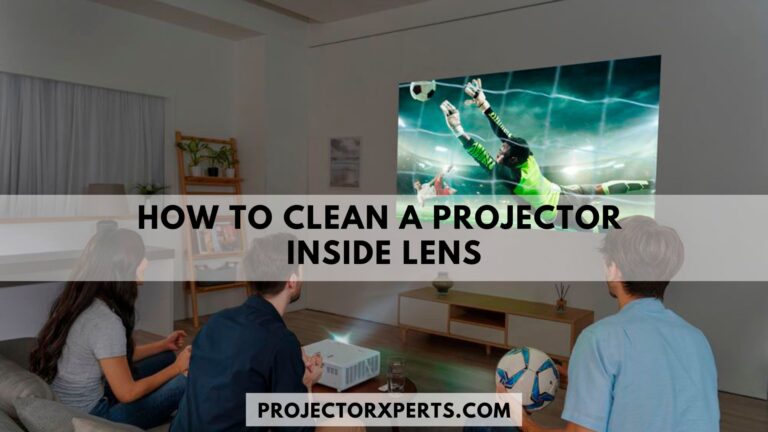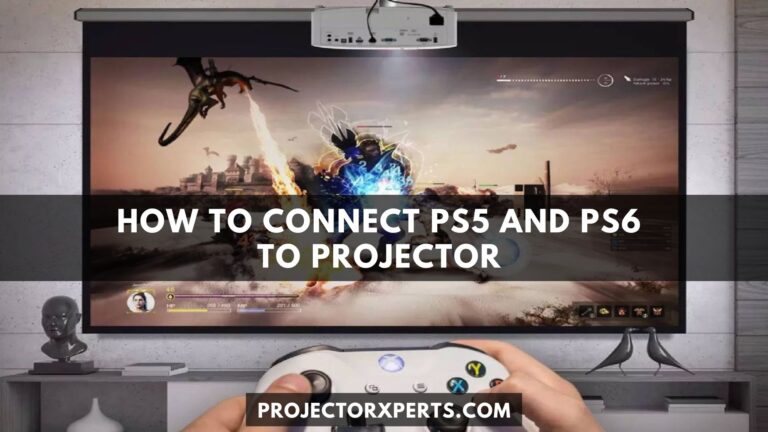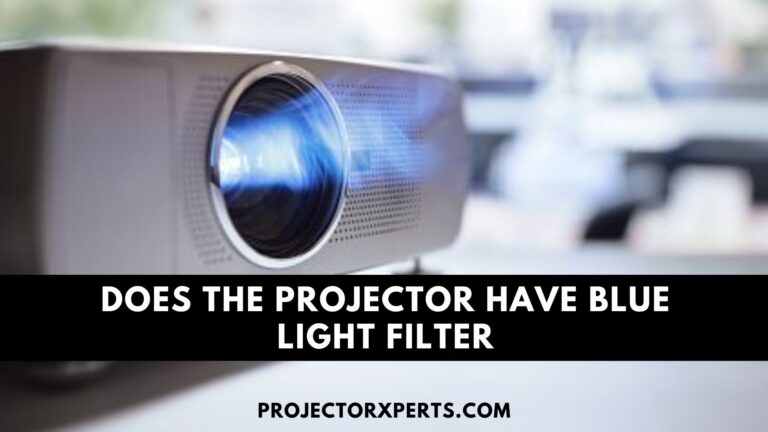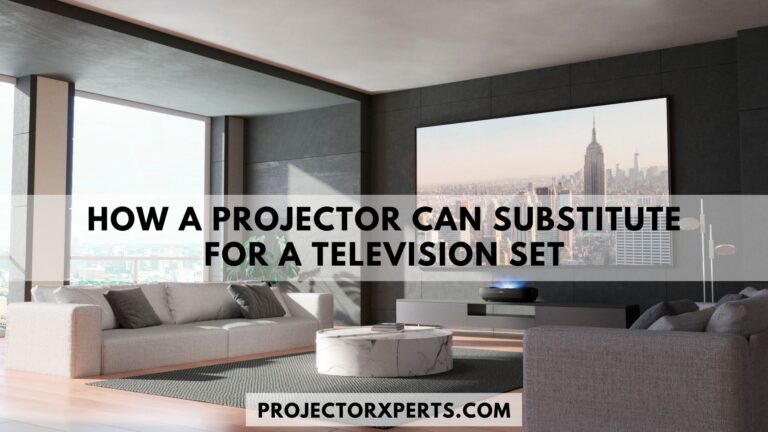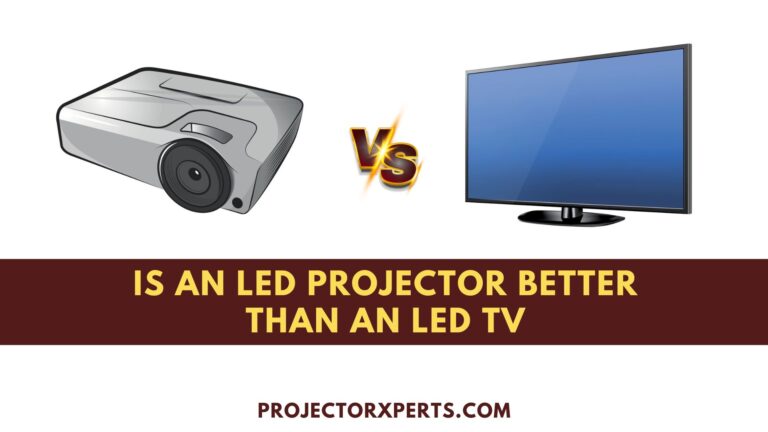How to Watch a Projector During the Daytime?
Daytime projector viewing opens up a world of entertainment and productivity possibilities, allowing you to enjoy movies, sports events, presentations, and more while basking in the natural sunlight. Embracing daytime projection not only enhances your overall viewing experience but also adds a touch of excitement and versatility to your entertainment setup. By making a few adjustments and following smart tips, you can transform your living space into a captivating daytime cinema or an engaging work environment.
- Personalization: If you have a specific purpose in mind for your daytime projector usage, such as movie marathons, outdoor events, or professional presentations, consider tailoring your setup accordingly. Each setup may have its unique requirements, and understanding your specific needs will help you optimize the viewing experience.
- Emotional Intelligence: Daytime projector viewing is not just about entertainment; it can also boost your mood and overall well-being. Enjoying your favorite content in the company of natural light can contribute to a sense of positivity and relaxation. Embrace the beauty of daylight projection and cherish the moments of joy it brings.
Challenges of Watching a Projector in Daylight
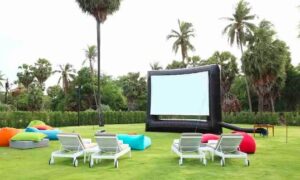
While daytime projector viewing offers numerous advantages, it does come with its fair share of challenges. The primary obstacle is the interference of ambient light, which can cause washed-out images and reduced visibility. Overcoming this hurdle requires a combination of proper settings, strategic placement, and innovative solutions.
Contextual Understanding
Dealing with ambient light interference is an essential aspect of optimizing your daytime projector viewing. Acknowledge the challenges and understand that overcoming them is achievable with the right approach.
Error Generation
Don’t be discouraged if your first attempts encounter some challenges, as it’s a natural part of the learning process. By recognizing the potential issues, you can better prepare to tackle them and refine your setup for optimal performance.
Response Variability
Remember that each environment and projector setup is unique, leading to different challenges and potential solutions. Be open to exploring various strategies to find what works best for your specific scenario.
Optimizing Projector Settings for Daytime Viewing
Adjusting Brightness and Luminance
The first step to optimize daytime projector viewing is to adjust the brightness and luminance settings of your projector. Lowering the brightness helps counteract the impact of ambient light, reducing glare and enhancing image clarity.
Response Variability
The ideal brightness level may vary depending on the ambient light conditions in your viewing area. Experiment with different brightness settings to strike the perfect balance that provides a clear, vibrant image without sacrificing visibility.
Setting Contrast and Sharpness
Finding the right contrast and sharpness settings is crucial for a captivating daytime projection experience. A higher contrast ratio helps distinguish between dark and light areas in the image, adding depth and realism to your visuals.
Personalization
Consider the content you frequently watch and adjust the contrast accordingly. For movies with cinematic visuals, a higher contrast setting can be beneficial, while presentations may benefit from a more balanced contrast ratio.
Choosing the Right Color Temperature
Color temperature plays a significant role in shaping the ambiance of your daytime projection. Warmer color temperatures (lower Kelvin values) create a cozy and comfortable atmosphere, while cooler temperatures (higher Kelvin values) offer a more energizing and vibrant feel.
Emotional Intelligence
The choice of color temperature can evoke different emotional responses. Select the one that aligns with the mood you wish to set for your daytime viewing, whether it’s a relaxing movie night or an invigorating sports event.
Error Generation
Keep in mind that preferences for color temperature can vary from person to person. Don’t worry if you need to fine-tune the settings to match your personal tastes, as it’s a normal part of the customization process.
Controlling Ambient Lighting
Using Curtains, Blinds, or Shades
An effective way to manage ambient light is by using curtains, blinds, or shades to block out external light sources during daytime projector viewing. Thick, light-blocking curtains or adjustable blinds give you the flexibility to control the amount of sunlight entering the room.
Coherent and Relevant Information
Utilizing light-blocking solutions is an integral part of creating a conducive environment for daytime projection. By minimizing external light interference, you can enjoy an immersive viewing experience.
Exploring Ambient Light-Rejecting Screens
Ambient light-rejecting screens are specially designed to combat the challenges of daytime projector viewing. These screens absorb ambient light while preserving the projector’s light, resulting in improved image visibility and reduced glare.
Contextual Understanding
Ambient light-rejecting screens can be a game-changer for daytime projection, especially in rooms with large windows or high natural light exposure. Consider investing in such a screen to enhance your viewing experience.
Strategic Projector and Screen Placement
The positioning of your projector and projection screen can make a significant difference in daytime viewing. Avoid placing the projector directly in front of windows or light sources, as this can lead to unwanted glare and washed-out images.
Response Variability
Depending on your room layout and available space, you may need to get creative with projector placement. Consider mounting the projector on the ceiling or using a projector stand to find the optimal angle.
Outdoor Daytime Projector Viewing
Portable Projector Solutions
If you’re planning an outdoor daytime projection event, a portable projector is your best companion. These compact and lightweight projectors allow you to carry your entertainment anywhere and enjoy movies, sports, or presentations in the great outdoors.
Personalization
Choose a portable projector that suits your specific needs, such as brightness level, connectivity options, and battery life. Tailor your selection to match the outdoor settings you frequent, whether it’s a park, backyard, or campsite.
Selecting Ideal Outdoor Locations
Picking the right location is essential for a successful outdoor daytime projector viewing experience. Look for spots with minimal direct sunlight and optimal space for comfortable seating arrangements.
Error Generation
Finding the perfect outdoor spot can sometimes involve some trial and error. Don’t be discouraged if your first location choice doesn’t work as expected. Learn from the experience and make adjustments for future setups.
Dealing with Natural Light Changes
Outdoor environments come with natural light changes throughout the day. Be prepared to adapt your setup as the sunlight shifts. Keep in mind the trajectory of the sun to avoid placing the screen in a spot that may become overly sunny later in the day.
- Emotional Intelligence: Embrace the changing natural light as part of the outdoor viewing experience. Sunset projections can create a mesmerizing ambiance, adding a touch of magic to your movie nights.
Additional Daytime Projector Viewing Tips
Using High Lumens Projectors
High lumens projectors are specifically designed for brighter environments, making them ideal for daytime viewing. These projectors emit more light, compensating for the presence of ambient light and ensuring better image visibility.
- Coherent and Relevant Information: High lumens projectors offer a practical solution to overcome daytime viewing challenges. Consider investing in one to enhance your projector setup’s brightness and overall performance.
Employing Anti-Glare Filters
Anti-glare filters are accessories that can be attached to the projector screen to minimize glare from ambient light sources. These filters improve image contrast and reduce reflections, leading to clearer visuals.
- Contextual Understanding: Anti-glare filters are a valuable addition for daytime projector setups, especially in rooms with unavoidable light sources. Assess your room’s lighting conditions to determine whether an anti-glare filter would be beneficial for your specific environment.
Experimenting with Viewing Angles
Adjusting the projector and screen’s viewing angles can make a notable difference in daytime viewing. Tilt the projector slightly downward to minimize the impact of overhead lighting and improve image clarity.
- Response Variability: Every room and projector setup is unique, and the ideal viewing angle may vary accordingly. Take some time to experiment with different angles to find the one that provides the best visual experience for your space.
Creative Hacks for Enhanced Daytime Viewing
DIY Sunshades and Light Barriers
If you prefer a do-it-yourself approach, consider creating sunshades or light barriers to shield your projector from direct sunlight. Using materials like cardboard, foam, or fabric, construct a shield to place around the projector, ensuring the light source is protected.
- Personalization: Embrace your creativity and customize your DIY sunshades to match your room’s decor or add a touch of fun to your outdoor movie nights. Personalized sunshades can serve as both functional accessories and conversation starters.
Innovative Projection Screen Materials
Explore innovative projection screen materials that are designed to combat ambient light interference. Some screens incorporate advanced optical technologies that reject external light, delivering vibrant and clear images even in brightly lit conditions.
Emotional Intelligence: The discovery of new technologies and materials can be exciting. Embrace the sense of wonder that comes with exploring innovative solutions and incorporate them into your daytime projection setup.
Integrated Daylight Projection Rooms
For those passionate about daytime projector viewing, consider dedicating a specific room or area to create the ultimate daylight projection space. Design the room with light-controlling elements, such as tinted windows, adjustable blinds, and acoustic treatments.
- Error Generation: Creating a dedicated daylight projection room may require careful planning and investment. Don’t worry if the process takes time or if adjustments are necessary along the way. The end result will be a unique and immersive viewing sanctuary.
Daytime Projector Maintenance and Care
Cleaning the Projector Lens
Regularly cleaning the projector lens is essential for optimal image quality. Dust, fingerprints, and smudges can affect the projected image, leading to a less enjoyable viewing experience.
- Coherent and Relevant Information: Incorporate projector lens cleaning into your routine maintenance to preserve the image clarity and overall performance. Use a soft, lint-free cloth or a projector lens cleaning kit for safe and effective cleaning.
Ensuring Proper Ventilation
Overheating can negatively impact your projector’s performance and longevity. Ensure that the projector has proper ventilation and is placed in a well-ventilated area to prevent heat buildup.
- Contextual Understanding: Adequate ventilation is crucial for the smooth operation of your projector. Consider the room’s temperature and airflow to find the best spot for projector placement.
Preventing Overheating
In addition to proper ventilation, take measures to prevent overheating during extended viewing sessions. Avoid placing the projector on surfaces that retain heat, such as thick carpets or blankets.
- Response Variability: Overheating can be a concern, especially for high-lumen projectors or when using the projector outdoors. Ensure that you allow sufficient cool-down time between viewing sessions to avoid overheating issues.
Alternative Solutions for Daytime Entertainment
Opting for Ambient Light Rejecting TVs
If you prefer a hassle-free option for daytime entertainment, consider investing in an ambient light rejecting (ALR) TV. These TVs are specifically designed to mitigate ambient light interference, offering clear and vibrant visuals even in brightly lit rooms.
- b If you prioritize ease of use and instant enjoyment, an ALR TV might be the ideal solution for your daytime viewing needs. Explore different screen sizes and features to match your preferences.
Considering Ultra-Bright LED Displays
Ultra-bright LED displays are an alternative to projectors, offering excellent image quality and brightness. These displays are ideal for daytime viewing, as they can achieve high brightness levels without compromising image clarity.
- Emotional Intelligence: Technology advancements provide us with a wide range of entertainment options. Embrace the convenience and possibilities offered by ultra-bright LED displays as a viable alternative for your daytime entertainment.
Using Projector Simulators for Daylight
Projector simulators are software or apps that mimic the projection experience on a TV or computer screen. These simulations can be used during daytime or in well-lit environments where traditional projectors may face challenges.
- Error Generation: Experimenting with projector simulators can be a fun and informative process. Embrace the trial-and-error aspect as you discover the simulator that best matches the projection experience you desire.
Related:
FAQs about Watching a Projector During the Daytime
Can I watch a projector during the daytime, or is it only suitable for nighttime viewing?
Absolutely! Watching a projector during the daytime is not only possible but can be a fantastic experience. With the right adjustments and techniques, you can enjoy your favorite content under natural light.
How do I deal with the brightness of the sun affecting the projected image?
Controlling ambient lighting is key. Using curtains, blinds, or shades to block out direct sunlight, exploring ambient light-rejecting screens, and strategic projector placement can significantly reduce the impact of sunlight on the projection.
What projector settings should I adjust for optimal daytime viewing?
Start by adjusting the brightness and luminance settings to an appropriate level. Then, set the contrast and sharpness to enhance image quality. Choosing the right color temperature can also set the mood for your daytime viewing experience.
Are there projectors specifically designed for daytime viewing?
Yes, there are high-lumen projectors specifically designed for brighter environments. These projectors emit more light, compensating for ambient light and ensuring better image visibility in well-lit spaces.
What can I do if I want to watch a projector outdoors during the daytime?
For outdoor daytime projector viewing, consider using portable projectors with higher brightness levels. Select ideal outdoor locations with minimal direct sunlight and be prepared to adapt as the natural light changes.
Can DIY solutions improve daytime projector viewing?
Absolutely! DIY sunshades, light barriers, and other creative hacks can help shield the projector from direct sunlight, improving the overall viewing experience.
How can I maintain my projector for optimal daytime performance?
Regularly clean the projector lens to ensure clear visuals and proper ventilation to prevent overheating. These maintenance steps will help preserve your projector’s performance.
Any particular time of day when daytime viewing might be better?
Early mornings or late afternoons could be your best bet. These times generally have softer sunlight, reducing the overall glare and making it easier to see the projected image.
Conclusion:
Optimizing daytime projector viewing involves a combination of thoughtful adjustments, creative solutions, and embracing alternative options. By fine-tuning your projector settings, controlling ambient lighting, and exploring innovative approaches, you can create a captivating viewing experience that thrives under natural light.

